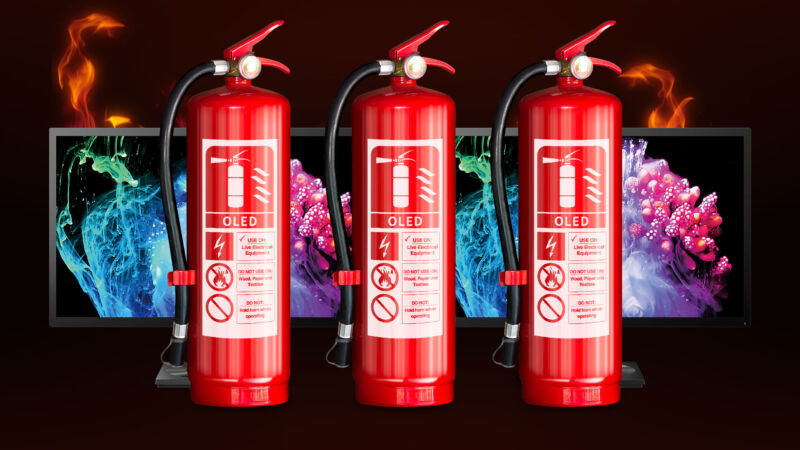
Until recently, OLED computer monitor selection was limited. Today, there's more than a handful available. LG Display and Samsung Display have made picking an OLED monitor exciting by designing competing models—white OLED (WOLED) and quantum dot OLED (QD-OLED), respectively—and monitor vendors are steadily addressing OLED scarcity and price barriers.
But what about longstanding fears of OLED burn-in?
People tend to display static images on computer monitors more frequently than on TVs—things like icons, taskbars, and browser address bars—making burn-in risk a concern.
I spoke with display experts and monitor vendors to get a deeper understanding of how modern OLED monitors fight burn-in. From improvements in the efficiency of OLED materials to software developments and new testing techniques, OLED burn-in risk has been lowered. OLED monitors are generally a more sound investment than ever—at least for the right person.
Yes, burn-in still happens
If you've ever owned a plasma display, you're already familiar with the threat of permanent image retention and the menacing shadow it casts on some brilliant display technologies. Some enthusiasts quickly shrug off burn-in risk as an overhyped occurrence that's irrelevant these days, but there are still accounts of burn-in happening on modern OLED monitors.
One person's experience doesn't guarantee your own, though. Further, you never know how someone who experienced burn-in actually used their monitor and whether what they're seeing is TFT layer-related image retention (which may be temporary) or permanent degradation of the OLED layer (burn-in). Still, these modern stories show that burn-in with today's OLED monitors is still possible and concerning for owners.
Dough (a company formerly called Eve) is taking preorders for its first (not totally uncontroversial) OLED monitor. Before starting the project, the company consulted with gaming monitor brands already pushing 48-inch OLED monitors. "Industry chatter," Dough co-founder Konstantinos Karatsevidis told me, showed that burn-in affected "around 5 percent of users" after two years. Without stronger evidence, we'll have to take that figure with a grain of salt. Five percent is still greater than zero, and most people hope to use a monitor for longer than two years.
That doesn't mean the OLED monitors coming out today aren't worth considering. The latest models have improved materials and firmware that make them significantly more resistant to burn-in than they were years ago.
Burn-in risk varies from monitor to monitor
Advancements in the materials science of OLED and quantum dots are big contributors to OLED displays' growing life spans.
Roland Wooster, chair of VESA’s Display Performance Metrics Task Group, told me that physical design changes have also helped. "For example, if blue is your problem, you can make a bigger blue pixel so that you don’t need to drive the current quite as high, and it lasts longer. Or you can cool the display better to reduce the temperature," he said.
Burn-in happens when subpixels aren't burning as brightly as before. This causes a shift in color among the pixels or, if they were all affected equally, dimming. Monitor firmware techniques can help mitigate or hide damage, Wooster explained:
By counting the time each subpixel is displayed and at what brightness, a "wear level" can be determined for each pixel, using an algorithm to estimate the luminance degradation this can be compensated for. However, to do this, you must have some spare luminance headroom that gets utilized as the display gets older. Or alternatively, if the display unlocks full maximum luminance when new without saving any headroom, the algorithm would dim the other pixels over time to bring them down to the level of the burned-in pixels, so the peak luminance of the display would diminish over time as the burn-in occurs.
Already, we can see why answering the question "which OLED monitors are more susceptible to burn-in?" isn't so easy.
The companies that make monitors can implement a range of firmware, software, and hardware techniques to help fight burn-in. These methods can vary among monitors from the same brand and between monitors using the same OLED panel but produced by different OEMs.
reader comments
173 with